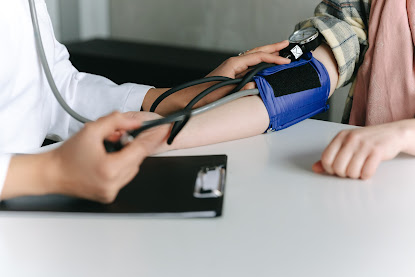Common medical emergencies; it doesn't happen often. But, this does not mean that it is complicated and straightforward. Everyone should know how to recognize and respond to an emergency. This often happens when you least expect it, at the grocery store, on the city streets, or at a sporting event.
Cardiovascular events:
Cardiovascular emergencies are not the most common, but the most dangerous. The skills of any health professional should include the ability to recognize and respond to them. You can take advanced cardiac life support (ACLS) courses from reputable.
ACLS students learn patient assessment, problem-solving, and team-based resuscitation, along with others. To save your life and that of your loved ones, contact an emergency hospital.
handle:
One in ten people will experience a seizure at least once in their life. As a healthcare professional, you have a great opportunity to help people with illnesses. Seizures have one advantage: they do not must immediate medical attention.
But, this does not mean that they are not important. If the patient comes to you after a seizure, you must be familiar with the appropriate method to determine the cause and develop a treatment plan.
Bleeding:
Cuts and bruises can cause bleeding. Most of the time, there is nothing to worry about, but a large wound or severe injury that requires immediate medical attention can occur. In such cases, there are various options; Your answer should be determined by factors such as the severity of the injury,
Make sure you familiarize yourself with the most common causes of bleeding and the best first aid techniques for each.
Difficulty breathing:
Whether the symptoms persist or only last a few minutes, sudden difficulty breathing is a sign that someone has a medical condition. Allergies, asthma, chronic obstructive pulmonary disease, influenza, COPD, and respiratory.
All healthcare providers should be able to distinguish between normal asthma symptoms and more dangerous conditions. They should also be aware of what to do in more serious emergencies.
Heat:
Heatstroke, often called sunstroke, is the most serious heat-related injury because it can damage the vital organs of the brain. Although the disease affects the elderly, the young are not immune. Heat exhaustion, heat syncope, and heat cramps are risk factors,
By immersing the patient in cold water, the doctor removes excess heat from the body. For more severe cases, an endovascular catheter may be required.
Beat:
Acne can take a long time to heal itself and is usually accompanied by severe pain that causes an emergency. As a professional, the first step in developing a treatment strategy should be to relieve discomfort and pain.
Complete fractures, stable fractures, comminuted fractures, transverse fractures, displaced fractures, and oblique fractures are among the different types of fractures. Swelling, pain, tenderness, deformity, bruising, and a humming.
Electric shock:
This is another common source of damage at home and work. When a person is exposed to a high-voltage electric shock, the skin, muscles, blood vessels, and nerves can burn to vary degrees. In rare cases, the lungs and heart can be damaged.
Patients with electrical injuries are evaluated and treated as trauma patients. The initial evaluation should include breathing, airway, and spinal immobilization. Because some injuries take up to a week to show, healthcare providers should look for subtle symptoms. Emergency services in Coimbatore should be contacted immediately for immediate health care.
Poison ingestion:
Toxic substances such as cleaning chemicals, insecticides, and drugs can be ingested by people either. In this case, urgent medical attention is necessary and the doctor must be aware of this



Comments
Post a Comment